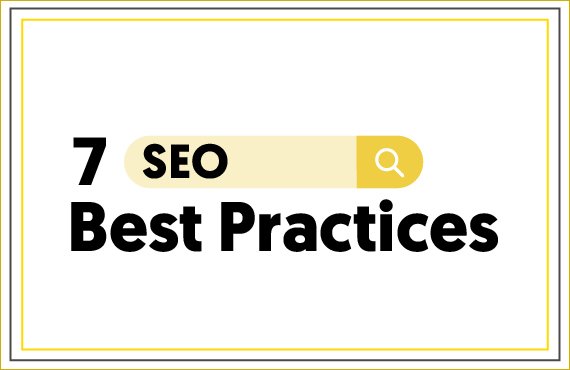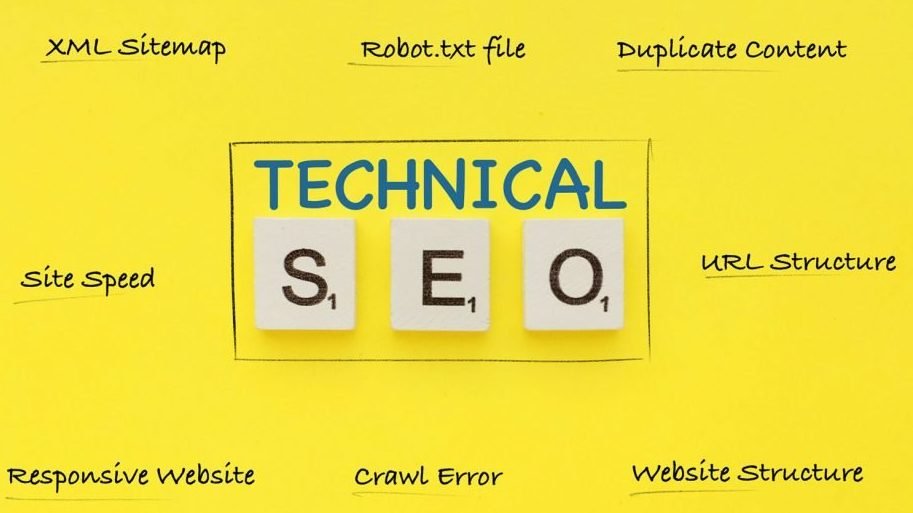Mon - Fri (10:00-22:00)
Creating an SEO-friendly Website: Tips for Small Businesses
by Triune Digitals
- 11 min read
Creating an SEO-friendly Website is very important for small businesses. If you want to succeed in a cutthroat market in the current digital era, building a strong online presence is crucial.
Adopting effective techniques is essential if you want to make sure that your company stands out from the crowd in the face of millions of websites vying for users’ attention.
Making a website that’s search engine optimized is one tactic, which enables potential consumers to locate and interact with your company with ease.
This blog article
- Focuses on providing valuable guidance specifically tailored for small businesses.
- The aim is to assist small businesses in establishing an effective online presence that is user-friendly and easily discoverable by search engines.
Here are our key takeaways:
Understand your target audience: Gain a deep understanding of your ideal customers’ demographics, preferences, and pain points.
Create a user-friendly website design: Prioritize clear and intuitive navigation, responsive design for mobile devices, and fast page loading speed.
Develop compelling and relevant content: Craft content that addresses your audience’s needs, tells engaging stories, and provides valuable solutions.
Optimize for mobile devices: Implement a responsive design approach to ensure your website looks and functions optimally on various screen sizes.

Understanding Your Target Audience
Before diving into the technical aspects of creating an SEO-friendly website it’s important to thoroughly understand your target audience. By gaining a deep understanding of who your ideal customers are, you can effectively tailor your website content and design to engage with them in a meaningful way.
Start by identifying your target market based on demographics, psychographics, and customer behaviors. Consider factors such as age, gender, location, interests, and purchasing habits. If you want to target your local audience you can use Local SEO for small business. Conduct market research, analyze customer feedback, and use data analytics tools to gather insights about your audience.
Once you have a clear understanding of your target audience, delve deeper into their needs, preferences, and pain points. What challenges are they facing? What solutions are they seeking? By answering these questions, you can position your business as the answer to their problems and provide valuable solutions through your website.
When Crafting Your Website Content?
- Use language and tone that resonates with your target audience.
- Speak their language, addressing their concerns and aspirations.
- Incorporate relevant keywords naturally within your content, ensuring that they align with the search terms your audience uses to find products or services similar to yours.
Consider the user journey when designing your website. Map out the various touchpoints and interactions your audience will have with your site. Create intuitive navigation that allows them to easily access the information or products they need. By doing so you can keep your audience interested and encourage them to use your SEO-friendly website.
Furthermore, personalize your content whenever possible. Use dynamic elements to address your audience by name or tailor recommendations based on their previous interactions. Personalization creates a sense of connection and relevance, increasing the likelihood of conversion and repeat visits.
Remember, your target audience is at the heart of your business. By understanding their needs, preferences, and behaviors, you can create a website that speaks directly to them, effectively capturing their attention and driving conversions.
User-Friendly Website Design
A user-friendly website design is crucial for creating a positive experience for your visitors and keeping them engaged. Allow me to explain the reasons why you should consider prospering your SEO. When users land on your website, they should be able to navigate intuitively, find information easily, and have a seamless browsing experience. Here are some key considerations for designing a user-friendly website:
Clear and Intuitive Navigation:
- Your website’s navigation should be easy to understand and navigate, allowing users to find the information they’re looking for with minimal effort.
- Use a clear and logical menu structure, with concise and descriptive labels for each page or section.
- Consider implementing a search bar to help users quickly locate specific content.
Responsive Design:
With the increasing use of mobile devices, it’s essential,
- To have a responsive website design.
- Responsive design ensures that your website adapts to different screen sizes and resolutions, providing a consistent and optimized experience across desktops, tablets, and smartphones. This flexibility allows users to access your website seamlessly, regardless of the device they are using.
Fast Page Loading Speed:
In today’s fast-paced digital world, users have little patience for slow-loading websites. A fast loading speed is crucial for providing a positive user experience and reducing bounce rates.
- Optimize your website’s performance by compressing images, minifying code, leveraging browser caching, and utilizing content delivery networks (CDNs).
- Regularly monitor your website’s loading speed and make necessary optimizations to improve it.
Except page design link building is also crucial for content promotion. Quality backlinks from reputable websites enhance visibility, drive traffic, and improve search engine rankings. They establish authority, expand online presence, and facilitate engagement with the target audience, making it an essential strategy for effective content promotion. We offer a white-hat link-building service to online businesses that need a high-quality, low-cost way to build links for their website.

Compelling and Relevant Content
Compelling and relevant content is the driving force behind a successful website. It not only captures the attention of your visitors but also keeps them engaged, encourages them to explore further, and establishes your brand as a valuable resource. Here are some key considerations for creating compelling and relevant content:
Know Your Audience:
- Understanding your target audience is essential for creating content that resonates with them.
- Research their interests, pain points, and motivations.
- Develop buyer personas to gain insights into their demographics, preferences, and challenges. By knowing your audience, you can tailor your content to address their specific needs and provide solutions that are relevant and valuable to them.
Storytelling:
Humans are naturally drawn to stories. Incorporate storytelling techniques into your content to make it more engaging and memorable. Share personal anecdotes, case studies, or customer success stories that demonstrate the impact of your products or services. Weave a narrative that connects with your audience emotionally and creates a sense of authenticity and trust.
Valuable and Educational Content:
- Create content that educates, informs, and provides value to your audience.
- Offer in-depth guides, tutorials, how-to articles, or expert insights that help solve their problems or answer their questions.
- Provide actionable tips and advice that they can implement immediately. The more value you provide, the more likely your audience will view you as an authority in your industry and keep coming back for more.
Mobile Optimization
With the increasing use of mobile devices, optimizing your website for mobile users is no longer optional it’s a necessity. Mobile optimization ensures that your website provides a seamless and user-friendly experience across a range of mobile devices, including smartphones and tablets. Here are some key considerations for mobile optimization:
Responsive Design:
- Implement a responsive design approach to ensure that your website adapts to different screen sizes and resolutions. This allows your content to be displayed correctly and optimally regardless of the device being used.
- Responsive design eliminates the need for separate mobile and desktop versions of your website, streamlining maintenance and providing a consistent experience across devices.
Mobile-Friendly Navigation:
- Simplify your website’s navigation for mobile users. Mobile screens have limited space, so prioritize essential menu items and streamline the navigation structure.
- Utilize mobile-friendly navigation patterns, such as a hamburger menu, to provide a clean and uncluttered interface.
- Aim for a seamless and intuitive navigation experience that allows users to find the information they need with ease.
Readability and Font Sizes:
- Text on your mobile website should be easily readable without zooming in.
- Use legible fonts and adjust font sizes to ensure optimal readability on smaller screens.
- Consider the spacing between lines and paragraphs to improve the overall reading experience.
- Avoid long paragraphs and break up content into smaller, scannable sections for better mobile readability.
Ongoing Website Maintenance and Updates
If you want to start a small business and create an SEO-friendly website it is not a one-time task it requires ongoing maintenance and updates to ensure optimal performance and visibility. Regular website maintenance helps improve user experience, enhances security, and keeps your site up-to-date with the latest industry trends and technologies. Here are some key considerations for ongoing website maintenance and updates:
Content Updates:
- Regularly review and update your website’s content to keep it fresh, relevant, and valuable to your audience.
- Add new blog posts, articles, or resources to provide up-to-date information and maintain user engagement.
- Update outdated information, such as product descriptions or pricing, to ensure accuracy. Fresh and updated content not only attracts search engine crawlers but also keeps your visitors coming back for more.
Technical Updates:
- Stay on top of technical updates to ensure your website operates smoothly and securely. This includes regularly updating your content management system (CMS), themes, plugins, and other software components.
- Keep track of security patches and apply them promptly to safeguard your website against potential vulnerabilities. Outdated software can lead to performance issues and security breaches, so ongoing updates are essential.
Broken Link Check:
- Regularly check for broken links on your website and fix them promptly. Broken links can negatively impact user experience and search engine rankings.
- Use tools or plugins to scan your website for broken links, and either update them or redirect them to relevant pages. By maintaining a healthy link structure, you improve user navigation and prevent visitors from encountering frustrating dead ends.
Conclusion
In conclusion, creating an SEO-friendly website is essential for small businesses aiming to establish their online presence and attract organic traffic.
By implementing the tips mentioned in this article, such as optimizing content, ensuring fast loading speed, and focusing on user experience, small businesses can improve their search engine visibility, increase brand awareness, and compete effectively in the digital landscape.
Remember, SEO is a long-term strategy that requires consistent effort and optimization to achieve sustainable results.
Frequently Asked Questions
What is SEO, and why is it important for small businesses?
SEO stands for Search Engine Optimization. It’s important for small businesses because it helps improve website visibility, attract organic traffic, increase online visibility, and boost brand awareness.
How can I make my website SEO-friendly?
To make your website SEO-friendly, you can optimize your content with relevant keywords, ensure fast loading speed, create engaging and unique content, make it mobile-friendly, optimize meta tags, build high-quality backlinks, use descriptive alt tags for images, and implement structured data markup.
Should I prioritize user experience or search engines when designing my website?
Both user experience (UX) and search engine optimization (SEO) are important. A well-designed website that prioritizes UX tends to rank higher in search engines.
How long does it take to see results from SEO efforts?
SEO is a long-term strategy. The timeline for seeing results can vary, but it generally takes several months to start seeing noticeable improvements. Consistency and ongoing optimization are key.


